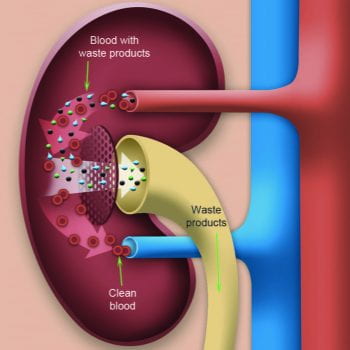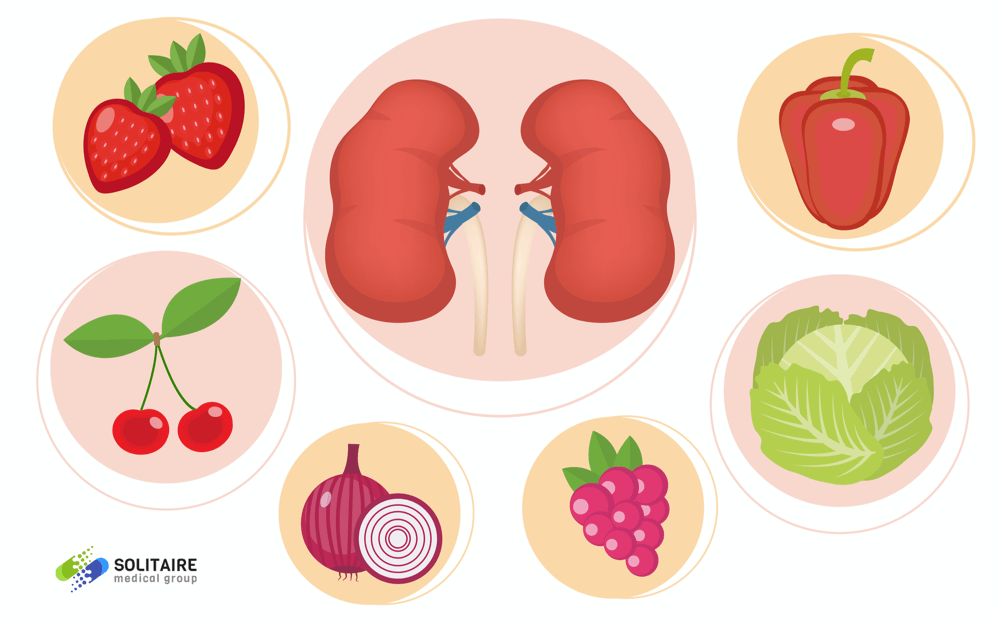From Blood to Urine: The Science of Kidney Filtration
The kidneys are little yet strong organs in the human body, working enthusiastically to keep us sound by separating blood, eliminating waste, and keeping a sensitive equilibrium between electrolytes and liquids. Without their effective filtration framework, the human body would battle to work. This article dives into the captivating science behind kidney filtration, investigating the excursion from blood to pee and the basic cycles that make it all conceivable.
The Life systems of the Kidneys
Situated on one or the other side of the spine, just beneath the rib confine, the kidneys are bean-molded organs generally the size of a clench hand. In spite of their humble size, they channel around 50 gallons of blood every day, creating around 1 to 2 quarts of pee. This exceptional cycle happens in the kidneys' minute utilitarian units known as nephrons, which are the genuine forces to be reckoned with of filtration.
Every kidney contains around 1,000,000 nephrons. These little designs are made out of two primary parts: the glomerulus and the tubules. Together, they work to channel blood, reabsorb fundamental substances, and discharge side-effects through pee.
Stage 1: Filtration at the Glomerulus
The most vital phase in kidney filtration starts at the glomerulus, a minuscule organization of vessels encompassed by a construction called Bowman's case. Blood enters the glomerulus under high tension, compelling water, salts, glucose, and side-effects through the narrow walls and into Bowman's case. This cycle is called glomerular filtration.
Significantly, the glomerulus goes about as a particular channel, permitting just little particles to go through while holding bigger particles like proteins and platelets. This particular filtration guarantees that fundamental parts of the blood stay available for use.
The rate at which blood is separated through the glomerulus is known as the glomerular filtration rate (GFR). A solid grown-up ordinarily has a GFR of around 90 to 120 milliliters each moment. A reduction in GFR can show hindered kidney capability and is in many cases a marker for kidney illness.
Stage 2: Reabsorption in the Tubules
After the underlying filtration, the separated liquid, known as filtrate, moves into the renal tubules. Here, the body starts the basic assignment of reabsorbing fundamental substances and keeping up with homeostasis.
The tubules are separated into a few fragments:
Proximal Tangled Tubule (PCT): This is where most reabsorption happens. Glucose, amino acids, and a critical piece of water and electrolytes are reabsorbed once more into the circulatory system.
Circle of Henle: This fragment assumes a key part in concentrating pee. As filtrate drops down the circle, water is reabsorbed. As it climbs, salts are reabsorbed, making a slope that assists moderate with watering.
Distal Tangled Tubule (DCT): Calibrating of reabsorption happens here, affected by chemicals, for example, aldosterone, which directs sodium and potassium levels.
Stage 3: Emission and Last Changes
Notwithstanding reabsorption, the renal tubules likewise emit substances straightforwardly into the filtrate. This interaction eliminates abundance hydrogen particles, potassium, and certain prescriptions or poisons from the circulation system. These changes are fundamental for keeping up with the body's corrosive base equilibrium and forestalling the collection of unsafe substances.
The filtrate, presently changed into pee, enters the gathering channels. These channels gather pee from different nephrons and transport it to the renal pelvis, in the end prompting the bladder through the ureters.
The Job of Chemicals in Kidney Filtration
Chemicals assume a huge part in controlling kidney capability. Central members include:
Antidiuretic Chemical (ADH): Otherwise called vasopressin, ADH increments water reabsorption in the gathering pipes, diminishing pee volume and monitoring water.
Aldosterone: This chemical animates sodium reabsorption in the distal tubules, in a roundabout way expanding water reabsorption and controlling circulatory strain.
Parathyroid Chemical (PTH): PTH controls calcium reabsorption in the kidneys, keeping up with calcium balance in the body.
These hormonal impacts guarantee that the kidneys adjust to evolving conditions, for example, drying out or varieties in pulse, keeping up with in general homeostasis.
What Happens When Kidney Filtration Comes up short?
At the point when the kidneys' filtration cycle is compromised, side-effects and poisons can gather in the circulatory system, prompting a condition known as uremia. This can result from different circumstances, including ongoing kidney sickness (CKD), intense kidney injury (AKI), or block of the urinary parcel.
Side effects of disabled kidney capability incorporate weakness, expanding (edema), hypertension, and changes in pee designs. On the off chance that left untreated, extreme kidney disappointment might require dialysis or a kidney relocate.
Safeguarding Your Kidneys
Keeping up with kidney wellbeing is fundamental for generally speaking prosperity. Here are a few hints to help your kidneys:
Remain Hydrated: Drinking sufficient water assists flush out poisons and supports ideal kidney with working.
Eat a Reasonable Eating routine: Breaking point salt and handled food varieties, and spotlight on organic products, vegetables, and lean proteins.
Control Pulse and Glucose: Hypertension and diabetes are driving reasons for kidney illness. Dealing with these circumstances can decrease the gamble.
Keep away from Abuse of Prescriptions: Nonsteroidal calming drugs (NSAIDs) and certain anti-microbials can hurt the kidneys whenever utilized unnecessarily.
Work-out Routinely: Actual work further develops dissemination and keeps a sound weight, decreasing burden on the kidneys.
The Eventual fate of Kidney Wellbeing
Propels in clinical science are consistently working on how we might interpret kidney capability and treatment choices for kidney-related conditions. Advancements like counterfeit kidneys, regenerative medication, and further developed dialysis methods hold guarantee for improved results and personal satisfaction for patients with kidney sickness.
End
The excursion from blood to pee is a complex and finely tuned process, featuring the unimaginable proficiency of the kidneys. These crucial organs eliminate squander as well as assume a focal part in keeping up with the body's inner equilibrium. By getting it and really focusing on your kidneys, you can uphold their capability and guarantee they keep on playing out their life-supporting assignments. The study of kidney filtration helps us to remember the mind boggling frameworks inside our bodies and the significance of keeping up with their wellbeing.




























0 comments: